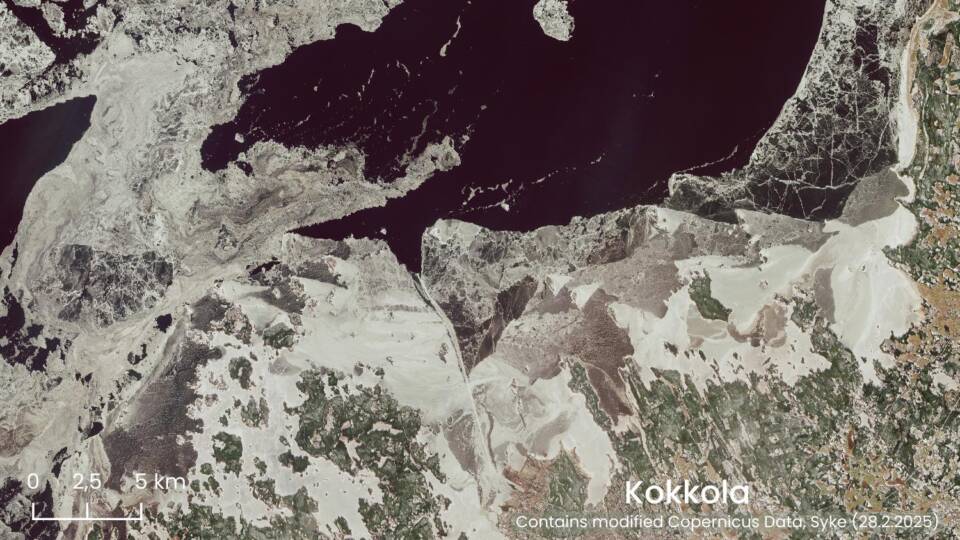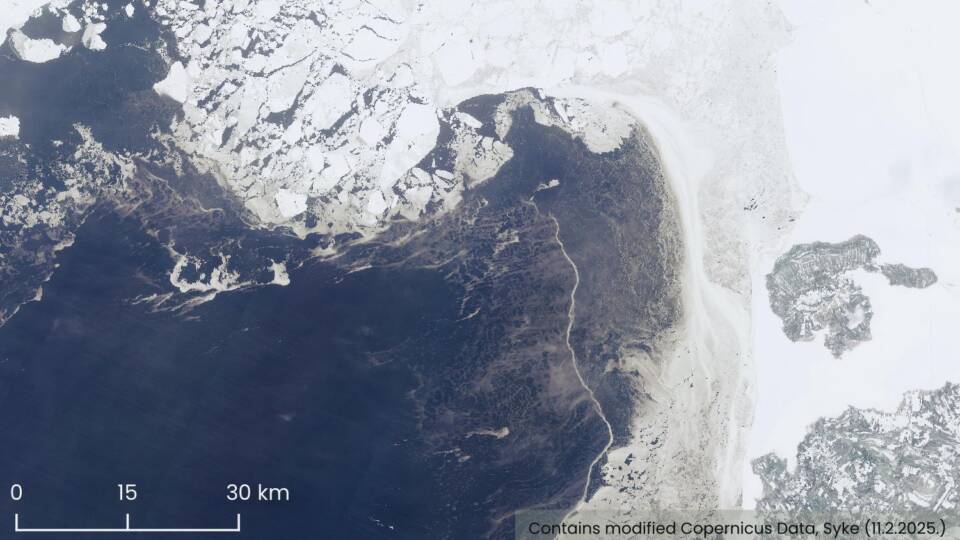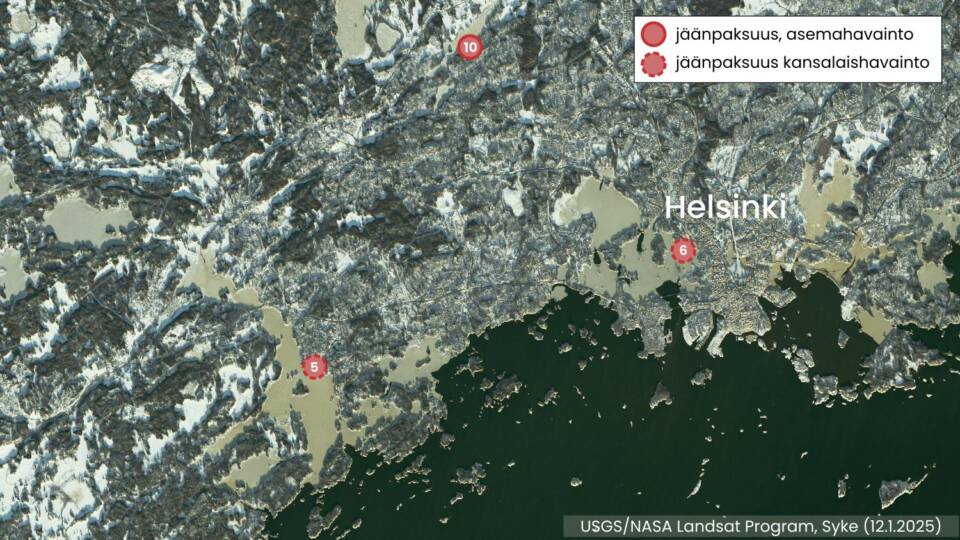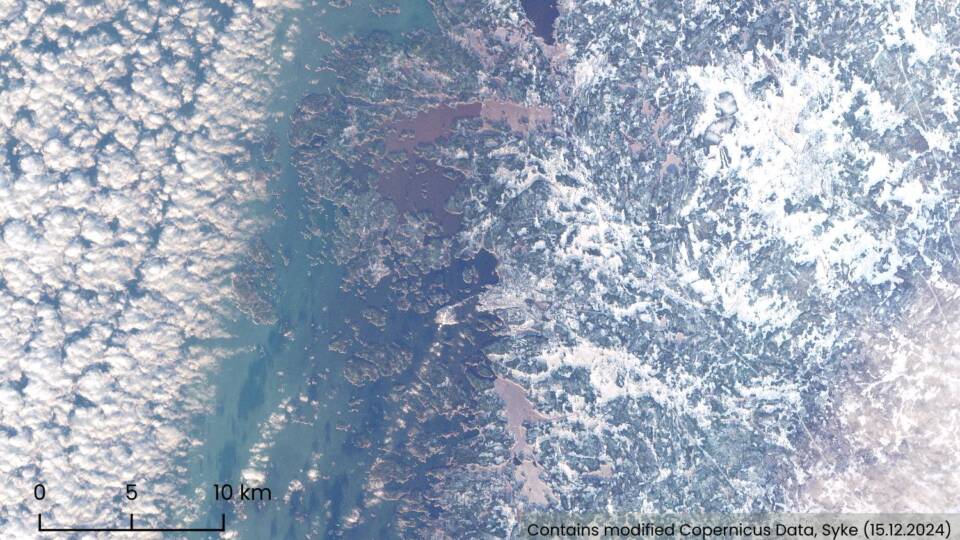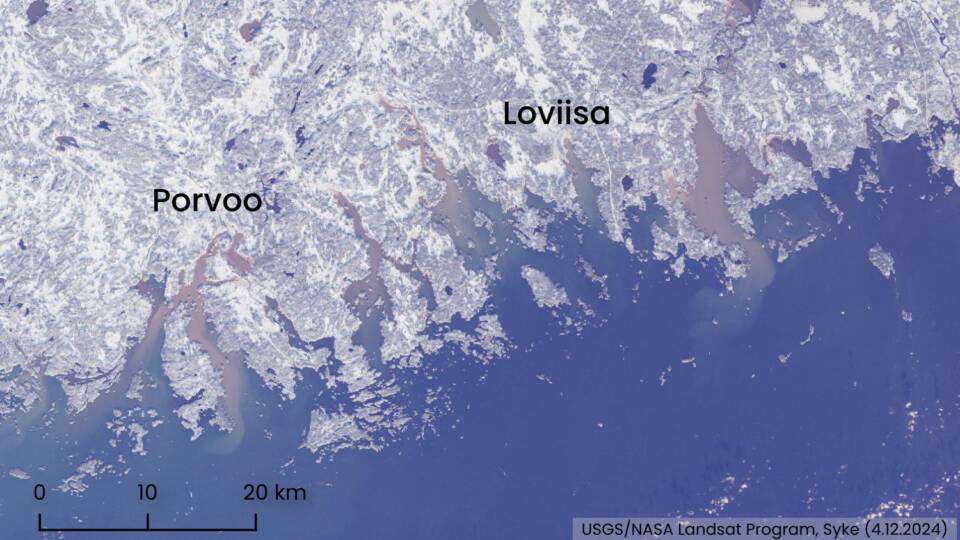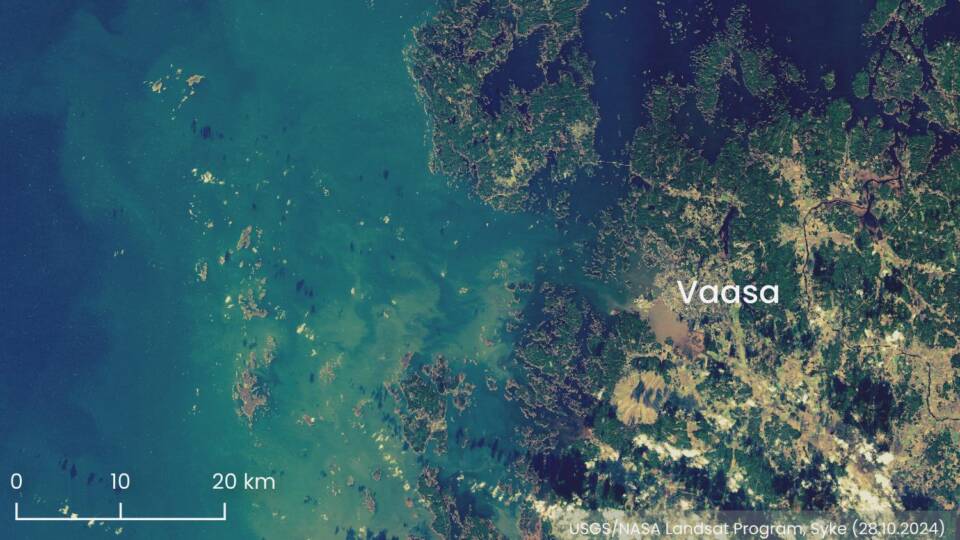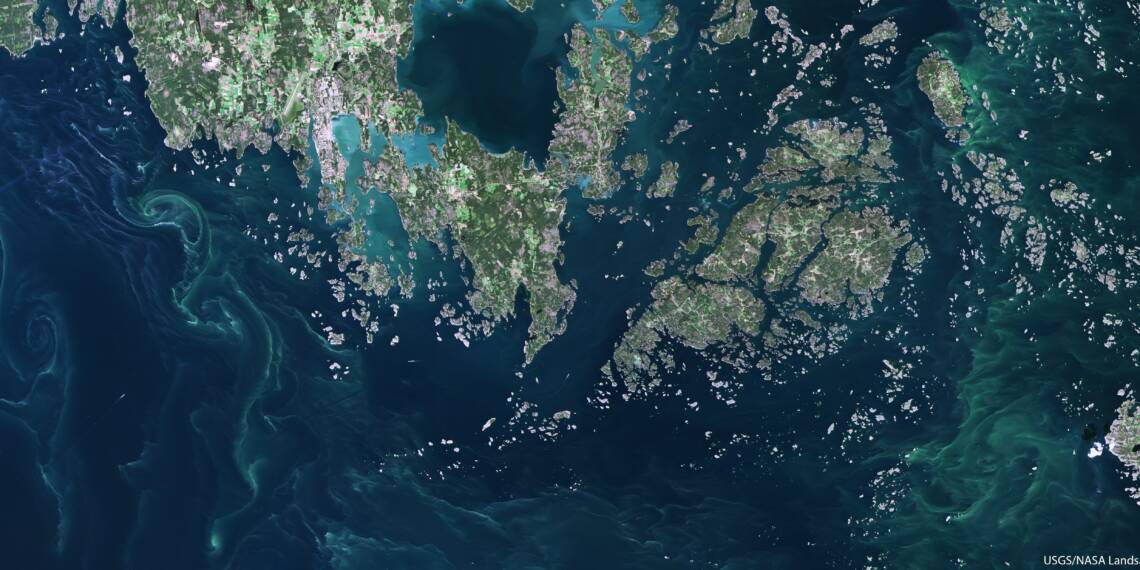
Satellite imagery provides extensive information on the state of the Baltic Sea
Satellite images provide information on sea areas on a large scale. Interesting phenomena, details and events can be found in the sea and in areas nearby. As an example, spirals of blue-green algae blooms on the surface water, turbid inflows from rivers to estuaries and areas with fine-structured ice cover can be spotted in images. Even single vessels can be distinguished.
Satellite images offer a new point of view for examining marine areas. Momentary fluctuations in surface waters, such as resuspension caused by a strong gust of wind or turbid areas occurring during dredging work, can cover large water areas. Resuspension refers to a situation when sunken sediment from the bottom is mixed back into the water due to strong winds. It is visible as turbid surface water as well. Pollen can also accumulate on the surface of the sea. It can be seen in high resolution satellite images as light-coloured swirls on the surface.
Changes in water quality monitored with satellite images
The state of the Baltic Sea is monitored with satellite images that are processed into values of several indicators. These indicators include surface water temperature, blue-green algae blooms, biomass of algae in the water, water turbidity and transparency.
-
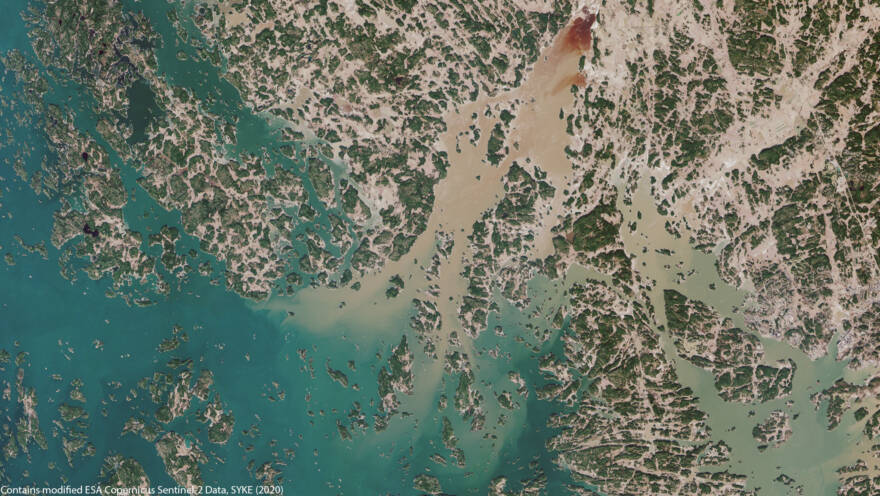 Find out more
Find out moreSyke Tarkka service (siirryt toiseen palveluun)
Substances mixed into the water – such as blue-green algae, clay and other inorganic matter transported by rivers from inland areas – affect the colour and intensity of the reflected light. Reflected light can provide very accurate information when interpreted with various mathematical models. Today, most of these models are neural network applications that have been trained to estimate water quality in a variety of different types of water bodies across the globe.
What is studied from satellite images?
Rafts of blue-green algae form on the surface of the water during summer, especially if the weather is warm and calm. The presence of blue-green algae blooms is estimated by using four categories: no algae, potential, likely and evident. The biomass of algae present in water can be determined by measuring the concentration of chlorophyll-a, which is a key indicator for estimating a water body’s state or its eutrophication, among other things.
Turbidity on the other hand is indicative of the amount of organic and inorganic matter, such as clay, suspended in the water. Turbidity in river estuaries varies greatly depending on how much inorganic matter the river carries from its drainage basin.
Secchi depth is a measure of water transparency. Secchi depth is used to describe the ecological state of a water body. Water bodies with clear water and a high visibility are typically in a good state. Secchi depth is low if the water is turbid, has a high concentration of humus or suffers from eutrophication.

Satellites operated by NASA and the ESA are utilised for research
Satellites observe targets on land and in water with a variety of methods. The whole Baltic Sea can be monitored as a single entity with observations made within a single day. Satellites can also observe more detailed areas, for example a single river’s estuary or an archipelago. SYKE uses satellite images from the Sentinel satellite constellation, belonging to the EU’s Copernicus programme, and NASA’s Landsat 8 satellite. During most weeks, the satellites collect plenty of data on all sea areas.
Observations are made daily and extensively throughout the entirety of the Baltic Sea with an accuracy of 300 metres. Observations are made with accuracy of 10–30 metres as well, but less often and the images cover smaller areas. Even the more accurate observations cover the whole coast of Finland every three days. Sometimes cloud cover prevents observation of the surface. During summertime, observations from a sea area consist of millions of individual pixels.[SK1] These observations can provide up-to-date information about the sea and be used to estimate the status of the sea in a longer period.
Clouds are not shown in the Tarkka service’s remote sensing products, so areas covered by clouds are shown with a background map. Despite the frequent cloud cover, a sufficient amount of observations can be made.
-
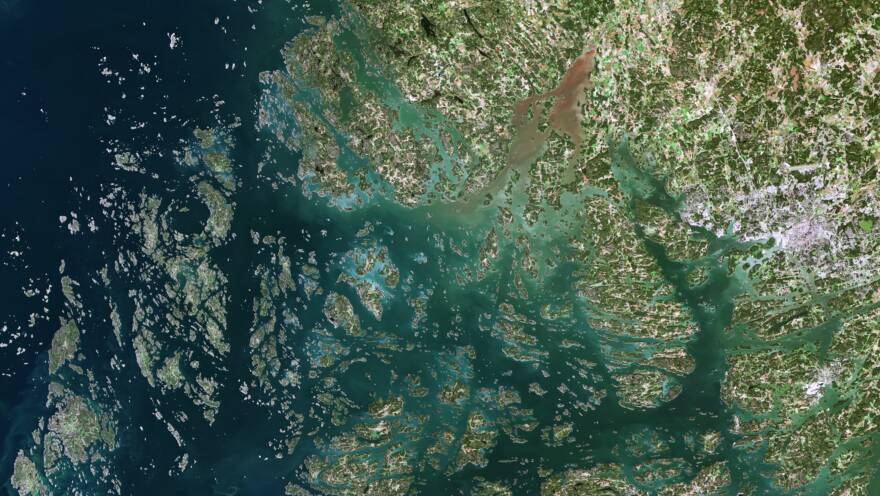 Find out more
Find out moreRemote sensing
-
 Find out more
Find out moreModelling
